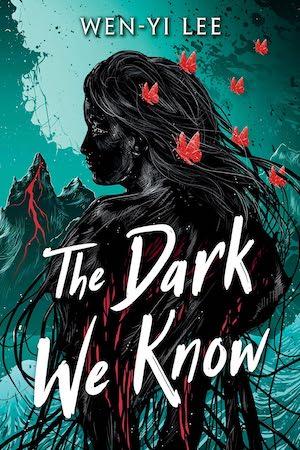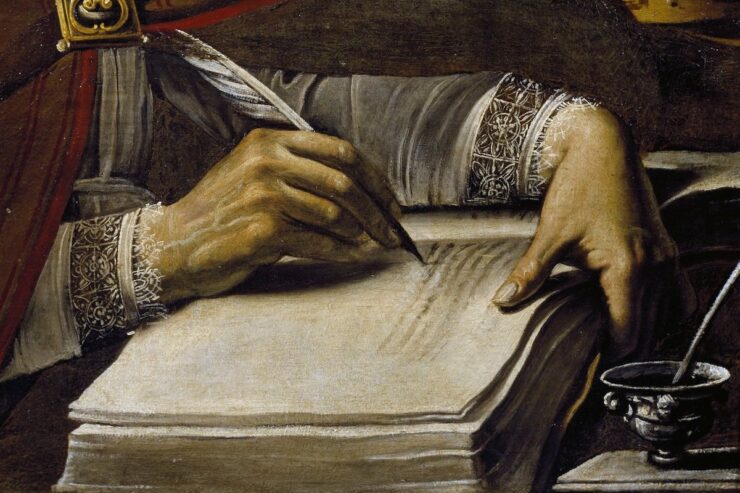When I was writing The Dark We Know, a loose retelling of Spring Awakening, I thought about the history of the show’s iterations. I was most inspired not by the original 1906 play in German, or the 2006 Broadway opening, but the 2015 revival by the Deaf West company, which performed the show in bilingual English/ASL with a company of Deaf/Hard-of-Hearing actors and highlighted prejudice against Deaf children from both family and schools, a choice that elevated the script’s themes of communication, isolation, and repression. The revival also interpreted the show’s queer scene not for comedy, as in the original, but as an equally intimate reprise to the straight leads.
There was also the 2023 London revival, which cast innocent ‘fairy queen’ love interest Wendla as a Black actress for the first time in the show’s major production history, and 2018 TV show RISE, which explored the casting of repressed, famously queer-coded, family-reject Moritz as trans. Theatre, more than any other medium, is a constant retelling. It is never set in stone. It is a constant reinterpretation, from night to night, acting choice to acting choice, director to director, cast to cast, production set to production set.
In books, Greek retellings currently run at the head of the race, but there have also always been retellings of Shakespeare, Pride and Prejudice, and countless fairytales. There’s comfort in returning to familiar worlds, especially in a saturated media environment that frequently cancels promising stories and prioritises digestible standalones over series. There’s comfort in returning to worlds we already know the rules of and characters we already love and understand—see, fanfiction, tropes; the pushing of franchise, sequel, and spin-off over original screenplays—perhaps also as we have conversations about changing attention spans and media literacy. In the current marketing landscape where it’s much easier to sell books that can be condensed to quick, recognizable pitches and tropes, retellings can also leverage their familiarity.
Returning to the less pragmatic—creatively, writers are drawn to retellings because they’re often the stories they grew up with, or have heard again and again. These stories might have taught us what stories were. And still, every retelling is different. It’s like that adage about giving a hundred writers the same prompt: each writer’s take on the same source will be different depending on how they read it, and what compels them about it. I think that’s fascinating.
From books to film to theatre, writers have always been inspired by the stories that came before them. As artists, what are we if not the sum of all we’ve seen and absorbed and alchemised into our own voice? The history of oral storytelling is a history of retelling; the art of storytelling is almost always an act of retelling in some way.
In a way, retellings can be about discomfort as well, both feeling and causing. Marginalized writers in the Anglosphere were taught the exact same canon, the books and tales established as the most fundamental epitomes of culture and civilization. Educated in English, I was taught and exposed to more Western classics and Germanic fairytales than Chinese or Southeast Asian myths. For better or for worse, they are the foundation of my ideas of stories, just like anyone in the UK or America. They are my reference points.
In the past few years, we’ve seen many more takes on classics from underrepresented voices: from queer Greek retellings to feminist Dracula’s wives to the Remixed Classics series, to Kalynn Bayron and Chloe Gong’s bestselling Black lesbian Cinderellas and Shanghai Shakespeares, to BIPOC Jane Austen takes, to a mad Korean Wonderland (Zoe Hana Mikuta’s also sapphic Off With Their Heads), a Neverland that wreaks violence on gendered bodies (P.H. Low’s Malaysian-inspired These Deathless Shores), a magical Thai-inspired Les Miserables (Christina Soontornvat’s A Wish in the Dark) or an Arthurian world in which the sword goes to a Black teenage girl (Tracy Deonn’s Legendborn).
(Here, I’m differentiating retellings of specific tales from fantasy worlds that adapt cultural mythological elements.)
BIPOC retellings are often about demanding a place. Otherwise or at the same time they can critique the rosy nostalgia of fairytale worlds (or the usually-fascist leaning that comes with hyper-defence of Classics and Canon and Civilisation). Queer retellings of great love stories are often claims less to the characters and more to that great love in itself. Retellings are often saying: we, too, claim crowns and prophecies, great loves and romantic tragedies. If these stories have been impressed on everyone as the epitome of human storytelling and mythology, then everyone has equal rights to them.
Retellings also present a chance to update, expand, or continue a conversation, whether that’s critiquing the colonial context of a British classic or the depiction of women in myths. Some remix the story in the original setting. Others switch up settings and genres entirely. It’s fascinating to see how a tweak of identity or perspective maintains or derails the original plot and characters. It highlights the norms underpinning the ‘universal’ story and asks us to broaden our consideration of its social context.
For example, in the original Gatsby, Jordan Baker was always the character that intrigued me most. Aloof and enigmatic, described independent and tomboyishly, queer readings of her have abounded for years. Nghi Vo’s The Chosen and the Beautiful puts her queerness and outsiderness front and centre, making her a bisexual adopted Vietnamese immigrant. Gatsby’s original themes of class and the American Dream—and its mostly non-exploration of race—are given a new dimension with this Jordan, who cannot afford to be as careless as her peers while navigating its carelessly moneyed world. Her aloofness becomes both a product of and necessary defence against her in-betweenness and disconnection from concrete belonging. The American part of the dream becomes a constant test, and she experiences the story’s spurts of violence in more vulnerable ways.
(In YA takes, there’s also Anna-Marie McLemore’s Self-Made Boys, which dives into the original theme of self-made new wealth and identities—in opposition to the rigidity of the Buchanan’s old money—with a transgender Jay and Nick. This Nick and Daisy are also variously white-passing Latines, again pulling a different thread in Gatsby’s original discussions on privilege.)
What new dimensions are there to the rules and obstacles in love when Romeo is a woman, or trans, or of a different race or class? How do we look at Medusa when retold as a story about gendered power and monstrosity? How is the mad savage wife reframed when her madness is explored in the context of alienation and patriarchy, as in the equally classic Jane Eyre retelling, Wide Sargasso Sea? Plus, whether Jordan with Daisy, or Jane Eyre with mad wife Bertha—as in L.L. McKinney’s Escaping Mr. Rochester—these reworkings also present the opportunity to place focus on two marginalized characters alongside each other, putting their solidarities, intersections, or even tensions in conversation as they both navigate a world set up against them.
At the same time, there is also a power in simply letting ahistoricity exist, and deliberately not acknowledging oppressive structures at all. Regencies without racism; queer-norm historical settings. Sometimes people are just allowed to imagine themselves in nice things.
Whether it’s interrogating or (re)claiming the original, I think these retellings are most powerful when they have something to say—when they step into the ring with a conversation in mind.
I also think, though: what stories are we able to retell?
Perhaps every story has been told, but not every story gets heard. Telling is free; receiving rests on access, amplification, and willingness to listen. The effectiveness of a retelling can sometimes rely on some familiarity with its original. Even if you haven’t read Romeo and Juliet, you probably know from cultural absorption that it’s about star-crossed lovers. You understand the impact of a retelling presenting a different meditation on the same theme of love torn apart by family and feud. What about retellings where most of a Western audience—and agents, and editors—might not be familiar with the source?
The swell of Chinese fantasy has made more mainstream both mythological elements as well as direct retellings: Shelley Parker-Chan’s genderbent Ming Emperor in She Who Became the Sun and Xiran Jay Zhao’s mecha-pilot Wu Zetian in Iron Widow; Ann Liang’s A Song To Drown Rivers, a romantic retelling of one of China’s Four Beauties; Sister Snake, Amanda Lee Koe’s modernised take on the Legend of the White Snake’s monstrous snake women; S.L. Huang’s The Water Outlaws, a queer spin on other Chinese classic Water Margin; Sue Lynn Tan and Emily XR Pan’s reimaginings of the legend of Chang’e (Daughter of the Moon Goddess and An Arrow to the Moon, respectively) and Van Hoang and C.B. Lee’s versions of Sun Wukong (Girl Giant and the Monkey King and The Epic Crush of Genie Lo, respectively).
From other parts of the world, there’s books like Vaishnavi Patel’s Kaikeyi and Goddess of the River (reimagining the goddess Ganga), Samit Basu’s Jinn-Bot of Shantiport (a sci-fi Aladdin), Renee Ahdieh’s The Wrath and the Dawn (A Thousand and One Nights), Axie Oh’s The Girl Who Fell Beneath the Sea (Korean folktale The Tale of Shim Cheong), and Soraya Bouazzaoui’s upcoming Moroccan war goddess Aicha.
We’re somewhere. The next step is obviously okay, good, now more.
I think about non-Western retellings that bear the weight of also being tellings, of being the first time these characters and symbols and histories have ever been presented in the Western or English-language literary scene. What retellings are received as comfortable, and which are received as exotic? (By non-Western I don’t mean geographically, obviously, but referring more to a canon which also excludes Indigenous cultures and others.)
Everyone in the world is never going to know every story ever, and of course retellings are enjoyable without knowing the source. But I can’t nowadays think about books without also thinking of the social and financial factors affecting their writing, publishing, marketing, distribution, and translation. There are ranges everywhere. So it’s retold once. Will it be retold in different languages, in different countries, in all the bookstores? Even after “Are we able to tell it?” it’s “Are we able to sell it?”
Still, retelling a story asserts that it is worthy and important of being heard again; transformative retelling asserts that it is powerful not just in its original form but as a story that can go beyond its borders of place, aesthetic, and time. Canon will always be canon—we reinforce it further with each retelling. But it can widen. And I hope to see those borders move.
Buy the Book


The Dark We Know










